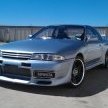Precision Pt6766 Vs Forcedperformance Gt3794R Hta Dyno Shootout
Announcements
-
Similar Content
-
Latest Posts
-
I was only looking because I saw some drops on the ground but it wasn't alot. Recently had it serviced will ask the mech to confirm. Find it strange that it looks standard though, can see in another photo of a random box
-
So...not sure if you know if that has always been there or why you went looking. It could be old damage from a clutch explosion, or even just the gearbox got dropped somewhere along the line. Basically, you should seal it up to stop oil and dust getting into the bellhousing, but it doesn't matter too much and is not structural. I'd suggest something like a glob of JB Weld. BTW what gearbox oil are you running, I would guess the breather has been spewing it everywhere.
-
Hey Duncan thanks for your reply. Sorry mate I know the photos are shit. Took another photo for reference. Seems the casing does have a hole in it looking on the net, fluid seeping out. Added a photo
-
Very hard to make out what you mean, is it the squarish hole with redline shockproof (probably) under it? Is that pic from on top of the engine with the firewall to the left of pic and engine to the right? Either way, spray the area liberally with degreaser and try again, maybe circle the part you are worried about
-
Hey all, Noticed I have a hole on top of which im guessing is my transfer case/gearbox. I can see it from the middle of my firewall looking down. S1 R33 gtr Any advice or can pinpoint what this is/caused this?
-




Recommended Posts
Create an account or sign in to comment
You need to be a member in order to leave a comment
Create an account
Sign up for a new account in our community. It's easy!
Register a new accountSign in
Already have an account? Sign in here.
Sign In Now